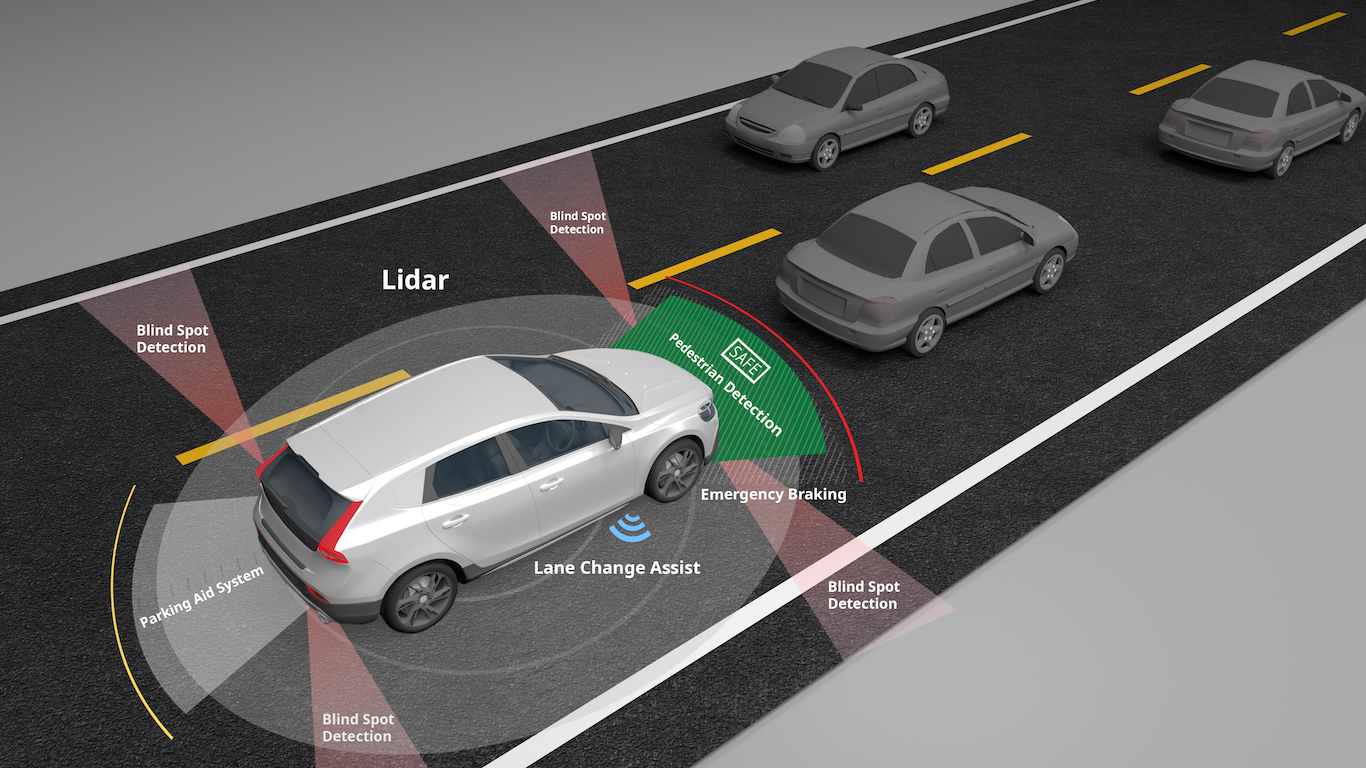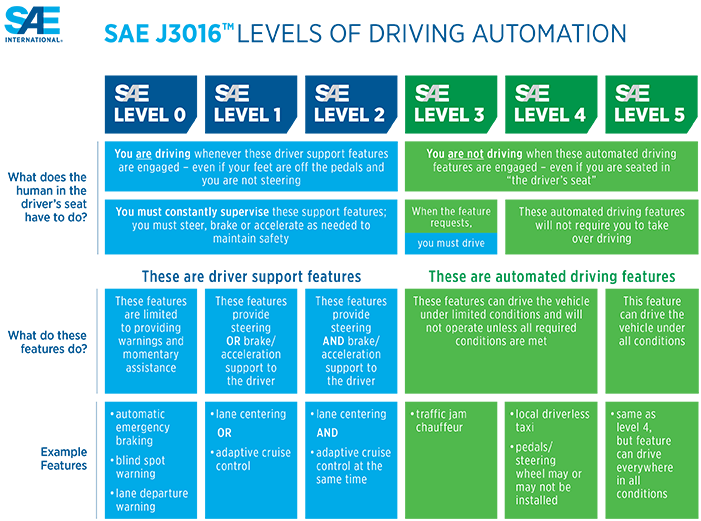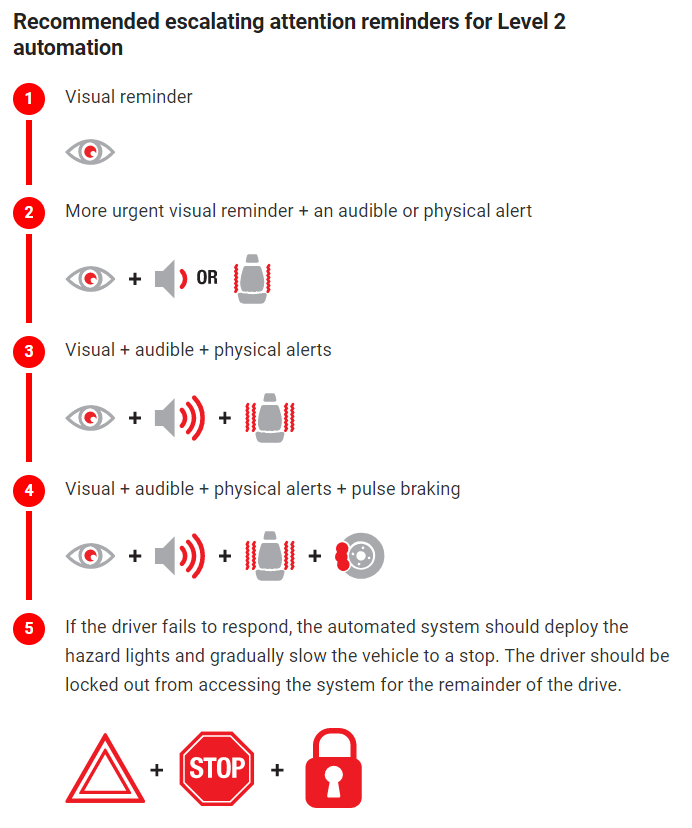
It’s hard to think of a survey of American drivers that has shown more than a limited interest in self-driving technology in light vehicles. Results of a recent survey by AAA indicated that just 12% of drivers would trust riding in a self-driving car.
That unwillingness is probably well-placed. Most U.S. drivers simply don’t know enough about the technology to feel safe. In the AAA survey, 72% said they would feel safer in a self-driving car if they had the ability to take over control if something goes wrong. With today’s partially automated driving systems, every vehicle that includes self-driving features, like lane-keeping or adaptive cruise control, requires the driver to retake control at any time for any reason.
The Insurance Institute for Highway Safety (IIHS) on Thursday released a set of safety recommendations for designers of partially automated driving systems. All such systems, IIHS, points out, “still need the driver to be involved at all times.” That implies that partially automated driving systems must have “robust methods of monitoring driver engagement and more effective ways of regaining the driver’s attention when it wanders.”
The current versions of self-driving systems should be based on “a principle of shared control, and they should have built-in limits that prevent them from being used on roads and under conditions where it isn’t safe to do so.” IIHS President David Harkey commented, “That’s why systems should be designed to keep drivers actively engaged.”
The IIHS cited the self-driving classification system developed by the Society of Automotive Engineers (SAE) International that specifies six levels of automated driving, ranging from 0 (no automation) to 5 (full automation).
Current self-driving systems are limited to level 2 automation. As the SAE chart indicates, the driver is driving the vehicle and must constantly supervise the support features, like lane-keeping and adaptive cruise control.
While the self-driving features themselves are engineering marvels, IIHS research scientist Alexandra Mueller noted that “they all suffer from the same problem: They don’t account enough for the behavior of the human being behind the wheel.” As the self-driving systems become more sophisticated and reliable, drivers are likely to become even less vigilant.
The National Transportation Safety Board (NTSB) has urged the development of driver monitoring systems that “minimize driver disengagement, prevent automation complacency and account for foreseeable misuse of the automation.”
IIHS noted, for example, that the SAE Level 2 automation features offered by Tesla, Mercedes-Benz and BMW can automatically change lanes if the driver flicks the turn signal lever. GM is set to update its Super Cruise system next year to change lanes without requiring the driver’s hands to be on the steering wheel.
Tesla’s misnamed Autopilot “discourages active driver participation by canceling the lane-centering function when the driver makes a minor steering adjustment.” If the system ignores or disables driver input, that contributes to a driver’s overreliance on the system. That adds to their discomfort with self-driving features.
The IIHS’s Harkey noted, “Drivers feel more comfortable with systems that don’t fight their input, especially when navigating curves and making other challenging maneuvers.” The researchers recommend that self-driving systems employ multiple driver monitoring methods, including a driver-facing camera, measurements of manual adjustments to the vehicle’s steering and drivers’ reaction time to the attention reminders.
The following diagram indicates how IIHS recommends that attention reminders escalate to regain driver control of the vehicle.
The IIHS also noted that no vehicle manufacturer currently incorporates all these measures in its self-driving technology package.
Self-driving technology (specifically, lidar) is one of the most important inventions of the first two decades of the 21st century.
Are You Ahead, or Behind on Retirement?
If you’re one of the over 4 Million Americans set to retire this year, you may want to pay attention. Many people have worked their whole lives preparing to retire without ever knowing the answer to the most important question: am I ahead, or behind on my goals?
Don’t make the same mistake. It’s an easy question to answer. A quick conversation with a financial advisor can help you unpack your savings, spending, and goals for your money. With Zoe Financial’s free matching tool, you can connect with trusted financial advisors in minutes.
Why wait? Click here to get started today!
Thank you for reading! Have some feedback for us?
Contact the 24/7 Wall St. editorial team.






